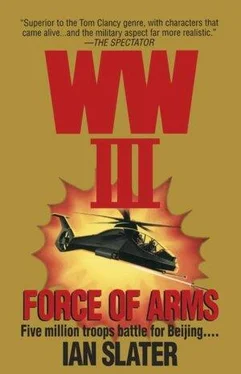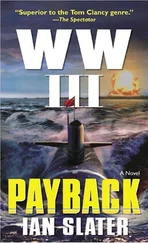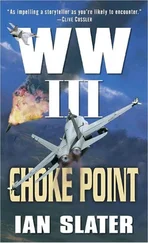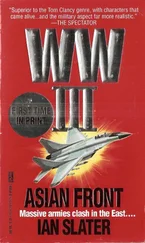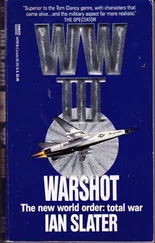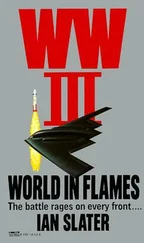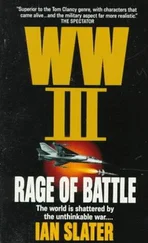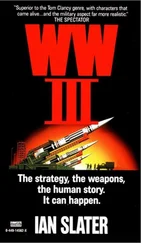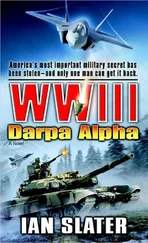Admiral Kuang was suspicious the moment he received the message from his forward AWACs — Air Warning and Control Aircraft — that there was unusually heavy sea traffic up and down the Formosa Strait. Junks were reported strung out from as far away as Fuchow to the north, south past Xiamen to the other Communist special-economic-zone port of Shantou 240 miles across the strait from Taiwan.
Kuang’s fleet of one attack helicopter carrier, an A-6 Intruder bomber carrier, and fourteen armed troop-carrying ships, together with over fourteen destroyers and frigates, under the umbrella of thirty-five ROC F-18s, was put on special alert. The AWAC estimated there were over a hundred junks plying the strait between the South China and East China seas. Admiral Kuang was surprised — he had expected opposition much earlier.
The other thing that surprised him was the reports from his underground operatives that thousands of members of the June Fourth Movement had seized the opportunity to strike against Beijing’s forces already. They had exceeded the admiral’s most optimistic expectations, having attacked and cut the rail junction 120 miles inland at Zhangping in the Guangzhou military district, thwarting any hope of the PLA quickly reinforcing its sixty-eight thousand members of Thirty-first and Forty-third Army Corps stationed on the coast around Xiamen.
Admiral Lin Kuang had also expected the PLA’s East China Fleet and planes out of Fuzhou to attack him before he was halfway across the strait. Again he had proved too cautious, for his own air force commanders in Ching Chuan Kang in Taiwan had confidently predicted that the low-level, radar-confounding, predawn strike by their F-15 Eagles, each carrying a twenty-three-thousand-pound bomb load, would all but obliterate the Communists’ opposition, destroying most of the PLA Shenyang F-7s on the ground at Fuzhou.
In any event, the few Shenyangs that did get airborne carried a maximum of only one ton of bombs, as opposed to the American-made Eagles’ ten tons, and were 345 kilometers slower than the Eagles. And the American-made planes were piloted by American-trained Taiwanese who had always, correctly it appeared, regarded the PLA pilots as brave third-raters in fourth-rate machines.
But if the Taiwanese Air Force was cocky as it continued to patrol the skies above Lin Kuang’s invasion fleet, the admiral himself never underestimated the mainland’s enemy forces. He told his captains to ignore the boasting of the air force and to keep their eyes peeled for the fast Haunan Hai Kou and the hydrofoil Huch’uan attack boats that formed the bulk of the PLA’s coastal “Great Wall of Iron,” not all of which had been destroyed either at dockside or by the air force’s attacks against the giant Shantou Base.
Many of the attack boats — it was estimated over forty— had not been accounted for, along with one of the Communist Chinese navy’s three old nuclear submarines armed with modern missiles. Reconnaissance showed that most of the PLA’s elite naval forces had in fact been deployed in the north off Manchuria rather than in China’s southern military regions that bordered on Laos, Burma, Vietnam, and India.
No doubt some of the naval forces would turn south to meet the Taiwanese threat and, if they saw it on their radar, the American Marine Expeditionary Force, but they had over a thousand miles to come down from the Yellow Sea where the bulk of the best boats had been patrolling from the mainland bases at Luda, Lushan, and Quingdao. Also Lin Kuang knew that the bulk of the guided-missile destroyers, the PLA navy disdaining bigger ships because of its commitment to its primary role as a coastal defense, were also deployed in the north. And so even if elements of the PLA’s Northern Fleet did leave Korean waters, heading south, the PLA’s fastest vessels, the heavily armed patrol boats, would not reach the Taiwan Strait for at least thirty hours. By then Lin Kuang hoped to have his invasion force of over a hundred and twenty thousand crack assault troops firmly established on the beachhead.
Everything was going so well in fact that Taiwan’s joint chiefs of staff believed that with Taiwan’s two tank divisions, eighteen motorized infantry divisions, one parachute division, and tactical air army-in all, over a quarter million highly trained, superbly American-equipped men— Taiwan might well defeat the three-million-strong, but much more poorly equipped, People’s Liberation Army— or, as many after Tiananmen called it, “the People’s Liquidation Army.”
Even so, Lin Kuang would not be swayed into taking shortcuts. He had always prided himself on being a realist, and because of that he was sticking to the original plan: to establish a beachhead and, with aerial superiority, press inland in a fan-shaped advance along the 120-mile Shantou-Xiamen axis. Such an advance was not only capable of being under a constant ROC air umbrella but could be constantly reinforced by ships coming in stream from Taiwan, less than twelve hours across the strait. Then and only then, Kuang believed, would his invasion prove a rallying point for the millions of disaffected Chinese civilians of the post-Tiananmen generations who, with the minorities, had been biding their time, waiting their chance to strike and overthrow the oppressive Beijing regime.
Lin Kuang’s strategy was further based on the fact that not only were the PLA’s two hundred divisions not nearly as well trained as the smaller, better-equipped Taiwanese divisions, but the two hundred divisions that the PLA boasted were spread all over the Chinese vastness — from Vietnam in the far south to Siberia in the north.
Fifty miles from the mainland, Lin Kuang felt the excitement mounting, some of the PLA’s shore batteries already exchanging fire with the big Nationalist guns on Quemoy, others firing beyond the line of junks on Kuang’s advancing Nationalist patrol boats, Kuang’s destroyers opening up on the lines of what they were sure were Communist patrol boats disguised as junks. From the junks, over twenty percent of which were hit by the first salvos of Lin Kuang’s destroyer escorts, bright orange flames erupted skyward, and behind the dense white clouds of smoke that could be seen pouring forth from them, creating a screen, squadrons of the two-hundred-ton Huangfen attack boats maneuvered adroitly against the oncoming fleet.
As streams of thirty-millimeter fire raced out from the high, thimble-shaped gun housings of the Huangfen boats, HY2 surface-to-surface missiles could be seen streaking from the two angled-box housings on each side of the patrol boats. Admiral Kuang’s observers also saw the wakes of several long twenty-one-inch-wide torpedoes just visible through the confusion of spray and smoke that was being penetrated by others in the flotilla of PLA attack boats, including at least a dozen Huch’uan hydrofoils speeding in zigzag patterns, bows high, closing and traversing in excess of forty knots.
In the ensuing chaos, the air filling with the thump, thump, thump of heavy-caliber machine gun fire and the churning noise of the fast patrol boats that occasionally ran into “friendly fire,” the hydrofoils tore open the sea, their wakes crisscrossing those of Lin Kuang’s destroyers, the latter trying frantically to avoid being hit by the torpedoes while throwing everything they had at the Communist boats.
Though not yet at the edge of the smoke cover themselves, a handful of officers on the bridge of one of Lin Kuang’s forward picket frigates noticed through their binoculars that the crews of the fast patrol boats were not only wearing goggles against the spray but what appeared to be gas masks. Minutes later, Lin Kuang’s advance screen of destroyers, entering the smoke proper, experienced the most debilitating attack of all, the destroyers’ crews blinded by the gas. Then it was frigates floundering as a flotilla of eight fast-moving Huch’uan hydrofoils closed on the frigates, the latter wallowing and most of their officers dead.
Читать дальше
